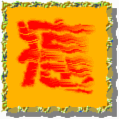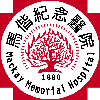 消化系惡性腫瘤(結腸直腸癌)
消化系惡性腫瘤(結腸直腸癌)
 消化系惡性腫瘤(結腸直腸癌)
消化系惡性腫瘤(結腸直腸癌)
![]()
RECTAL CANCER TREATMENT
The three main types of treatment for rectal cancer are surgery, radiation therapy, and chemotherapy. Depending on the stage of the cancer, two or even three of these types of treatment may be combined at the same time or after one another.
After your disease has been found and staged, your doctor will recommend a treatment plan. This is an important decision, and it is important to take time and think about all of the choices. You may want to ask for a second opinion. This can provide more information and help you feel more confidant about the treatment plan you choose. Some insurance companies require a second opinion before they will pay for certain treatments.
Rectal surgery: Several methods are used for removing or destroying rectal cancers.
Polypectomy is a method used to remove mushroom-like growths that contain stage 0 cancers. The cancer is cut out across the base of the stalk.
Local excision removes superficial cancers and a small amount of nearby tissue from the inner layer of the rectum.
Local full thickness resection involves cutting through all layers of the rectum to remove invasive cancers as well as some surrounding normal rectal tissue.
Electrofulguration destroys a cancer by burning it with electrical current.
All four of these above methods can be done without cutting through the abdomen.
Stage I, II, or III rectal cancer is usually removed by either low anterior (LA) resection or abdominoperineal (AP) resection. LA resection is used for cancers near the upper part of the rectum, close to where it connects with the colon. After LA resection, the colon is attached to the anus and waste is eliminated in the usual way.
AP resection is used for cancer in the lower part of the rectum, close to its outer connection to the anus. After AP resection, a colostomy is needed. A colostomy is an opening in the front of the abdomen. It is used for elimination of body wastes when part or the entire rectum has to be removed. A colostomy is used much more often in surgical treatment of rectal cancer than for colon cancer.
A pelvic exenteration removes the rectum as well as nearby organs such as the bladder, prostate, or uterus when the cancer has spread to these organs. A colostomy is needed after pelvic exenteration.
Radiation therapy for rectal cancer: Radiation therapy uses high energy radiation to kill cancer cells. External beam radiation therapy uses radiation delivered from outside the body to focus on the cancer. Local radiation therapy or brachytherapy uses a small pellet of radioactive material placed directly into the cancer. After surgery, radiation can kill small deposits of cancer that may not be seen during surgery. If the tumor is in a position that makes surgery difficult, radiation may be used before surgery to shrink the tumor. Radiation also may be used to ease (palliate) symptoms of advanced cancer, such as intestinal blockage, bleeding or pain.
Side effects of radiation therapy for rectal cancer may include mild skin irritation, nausea, diarrhea, or tiredness. These usually last a short time. If you have these or other side effects from radiation therapy, talk to your doctor or nurse. They can suggest ways to lessen many of these problems.
(2) 姑 息 性 治 療
對 於 手 術 後 復 發 性 腫 瘤 、 或 原 發 腫 瘤 太 大 無 法 切 除 者, 姑 息 性 照 射 有 助 於 腫 瘤 控 制 及 症 狀 的 緩 解 。 若 癌 細 胞 轉移 至 骨 頭 、 腦 部 , 甚 至 肺 部 、 肝 臟 等 引 起 疼 痛 、 癱 瘓 、 咳血 或 腹 脹 等 症 狀 , 亦 可 經 由 局 部 照 射 而 達 到 減 輕 症 狀 的 效果 。
Chemotherapy for rectal cancer: Studies have shown that chemotherapy after surgery can increase the survival rate for patients with some stages of colon cancer. Chemotherapy can also help relieve symptoms of advanced cancer.
Systemic chemotherapy uses anticancer drugs that are injected into a vein or given by mouth. These drugs enter the bloodstream and reach all areas of the body, making this treatment potentially useful for cancers that have metastasized (spread) beyond the organ they started in.
Fluorouracil (5-FU) is the drug most often used to treat colon cancer. It is sometimes given together with other drugs, such as leucovorin or levamisole that increase its effectiveness.
Chemotherapy drugs kill cancer cells but also damage some normal cells. Therefore, careful attention must be given to avoiding or minimizing side effects, which depend on the type of drugs, the amount taken, and the length of treatment. Temporary side effects might include nausea and vomiting, loss of appetite, loss of hair, and mouth sores. Because chemotherapy can damage the blood-producing cells of the bone marrow, patients may have low blood cell counts. This can result in an increased chance of infection (due to a shortage of white blood cells), bleeding or bruising after minor cuts or injuries (due to a shortage of blood platelets), and fatigue (due to low red blood cell counts).
Most side effects disappear once treatment is stopped. Hair will grow back after treatment ends, though it may look different. There are remedies for many of the temporary side effects of chemotherapy. For example, antiemetic drugs to prevent or reduce nausea and vomiting can be given.
Treatment Choices by Stage of Rectal Cancer: For all stages, surgery to remove the rectal cancer is the primary or first treatment. Adjuvant therapy (additional treatments) may also be used.
In rare cases electrofulguration (burning the cancer with electrical current) or local radiation therapy (placing radioactive material directly into the cancer) may be used.
In some cases of stage II rectal cancer, local full thickness rectal resection is done after chemotherapy, with or without radiation therapy. This approach can prevent the need for AP resection and colostomy in some cases.
For patients whose rectal cancer has metastasized (spread) to a few areas in the liver or lungs, removing or destroying these metastases can prevent some problems. Sometimes, treatment of metastases can help the patient to live longer. Some liver or lung metastases may be removed by surgery. Liver metastases may also be destroyed by freezing them, by injection of concentrated alcohol into the cancer, or by placing radioactive material into the cancer. Another method is to inject material to embolize (clog up) the blood vessels that feed the cancer.
There are some important follow-up activities after treatment for colorectal cancer that can help you to deal with your situation.
Follow-up Care: For years after treatment ends, regular follow-up exams will be very important for you. Your doctor will want to watch for signs of disease in order to keep you healthy. Any signs of tumors can be found early. Follow-up tests may include colonoscopy, barium enema, blood tests for tumor markers such as carcinoembryonic antigen (CEA) and imaging studies such as chest x-rays, CT scans, and MRI scans. These can detect recurrence, that is, the cancer coming back. Be sure to report any new or persistent symptoms to your doctor right away.
Tumor markers: Carcinoembryonic antigen (CEA). is a substance in the blood of some people with colon cancer.The CEA blood test is most often used with other tests for follow-up of patients who already have had cancer and have been treated. CEA may be useful to provide an early warning of a cancer that has returned. CEA may be present in the blood of some people without colon cancer. Often these people have ulcerative colitis, noncancerous tumors of the intestines, or some types of liver disease or chronic lung disease. Smoking can also cause an increase in CEA levels. Because the CEA level in the blood can be high for reasons other than cancer, it is not a specific test for cancer. It is not a method for finding cancer in people who have never had a cancer and appear to be healthy.
For patients with colostomies: Few permanent colostomies are needed now in the treatment of colon cancer. Most colostomies are done for cancers that are near the outer or lower end of the rectum. If you have a colostomy, follow-up is an important concern. You may feel worried or isolated from normal activities. Whether your ostomy is temporary or permanent, an enterostomal therapist (a health care professional trained to help people with their colostomies) can teach you about the care of your colostomy. Ask the American Cancer Society about programs offering information and support in your area.